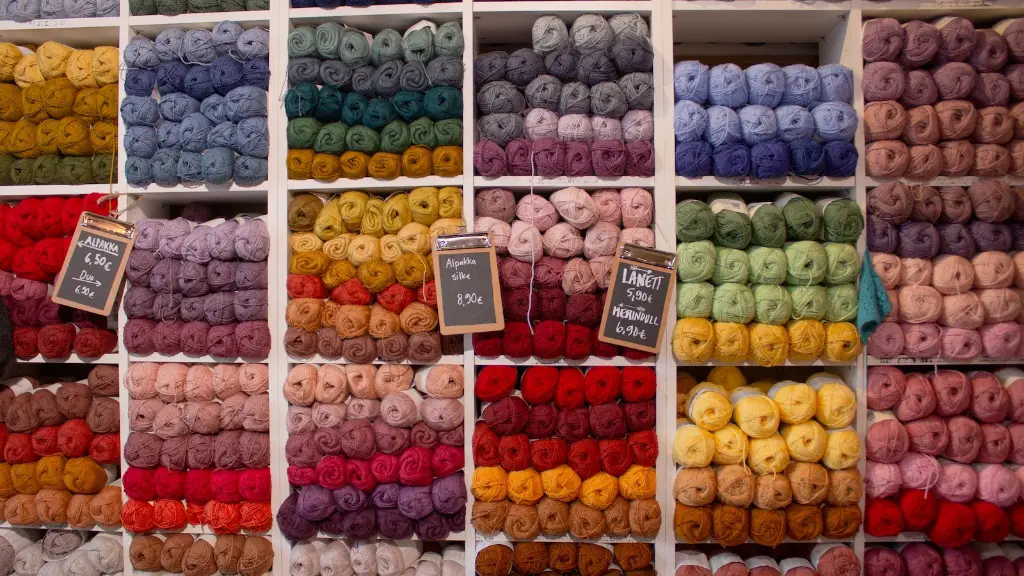Having an issue with your sewing machine needle? Don’t worry; you’re not alone. Sewing machines can be quite temperamental and it is common to experience minor snags. From lint build up to bent needles, these issues can be incredibly frustrating when you’re looking to do or finish a project. Fortunately, you don’t have to live with these issues: the solution can be as simple as understanding the issue in more depth and taking the necessary steps to address it.
Often times, bent or chipped needles are caused by needle hitting an object, like a pin or a zipper. Either that or the needle hasn’t been inserted into the machine properly and has been impacted by the machine’s internal components instead. In either case, it’s best to error on the side of caution and replace the needle with a new one that matches the original one you were using before.
When replacing the needle, start by unscrewing the thumb nut that holds the needle in place (or if you have a drop-in model, it’s best to just drop the needle carefully). Insert the new needle, making sure that it’s in the right position and straight. Ensure that the point of the needle is facing the same direction as the presser foot. Tighten in the thumbscrew, or the drop-in model’s presser bar, to completely secure the needle in place. If you’ve inserted it correctly, the needle should move up and down without any wiggle or resistance.
Another issue that’s common is thread getting tangled inside the machine. This usually happens when too much thread is clogging up the needle plate or when the upper thread isn’t meeting with the lower one properly. To rectify this, first turn off the machine and manually remove the tangled bits of thread. You’ll want to disassemble the needle plate to have full access to the bobbin compartment. This can be a bit tricky, so be sure to consult your user’s manual. After removing the stuck threads, run a few hand stitches with your machine (no more than three) to be sure that the thread won’t tangle again.
It’s also important to make sure that the sewing machine needle is compatible with the fabric and thread you’re using. Each needle has a different number and material. Some of the common ones are 70/10, 80/12, and 90/14. The first two numbers refer to the needle’s diameter, while the last two refer to the metric measurement, which is the distance between the needle’s eye and its point. A heavy load of fabric and thread require a higher number value.
Regardless of the issue, it’s important to follow the correct steps when fixing any sewing machine needle problems. Utilize the user’s manual that comes with your machine whenever possible and look up specific tutorials if necessary. By understanding the basics and protocols, you’ll be able to troubleshoot and maintain your sewing machine in better condition.
Cleaning Needle & Feed Dogs
One important yet often neglected step in instructing people on how to service their sewing machine needle is to also clean the needle and feed dogs. Cleaning the needle will allow it to feed thread through fabric more easily and helps maintain a consistent stitch when sewing. To do this, use a soft cotton cloth to remove any lint or dirt stuck to the needle. A dry toothbrush can come in handy for removing any thread particles from the feed dogs. You’ll want to be careful not to damage the needle, so avoid using any kind of cloth or cleaning solution that can scratch the surface.
It’s also advised to oil these parts of your machine every so often. This will help keep them free from rust and wear and tear. Be sure to apply a few drops of oil to the moving parts as they will be interacting with needles most of the time. Taking care of needle, feed dogs and other parts of the machine regularly is important to ensure that it keeps its optimal functioning.
Tips to Avoid Needle Problems
Prevention is always better than cure, which means that it’s best to avoid needle problems in the first place. Here are a few tips to keep in mind:
- Make sure that you’re using the correct needle size and type for your fabric.
- Always keep the needle plate and bobbin case clear of any lint or dirt.
- When removing the needle, always make sure that it is unscrewed properly before taking it out.
- Insert the new needle in the correct direction and make sure that it is seated properly.
- Withdraw the needle from the fabric and fabric from the needle after each task so as to avoid any extraneous wear and tear.
Care & Maintenance
If you’re a heavy user of your sewing machine, it’s important to take extra care in properly maintaining your needle. This means regularly checking the needle for wear and tear, seeing if it’s still properly aligned and ensuring that the element that holds it in place is still tight. Also, in addition to oiling the parts of the machine, it’s recommended to check the moving parts and make sure that they are adequately lubricated and in good working order.
Preferred Manufacturers
The most popular manufacturers when it comes to sewing machine needles include Schmetz and Organ, who are both renowned for producing high-quality needles. If you’re shopping for a new machine needle, be sure to go with either of these brands, as they are known for making needles that last and don’t cause a lot of wear and tear.
Conclusion
Sewing machines can be temperamental and finicky, especially when it comes to needles. Knowing how to properly fix and maintain them is essential if you wish to keep your machine running and avoid any unnecessary repairs. Use the tips provided in this article and consult your user’s manual to ensure that you get the best possible life and performance out of your machine’s needle.



